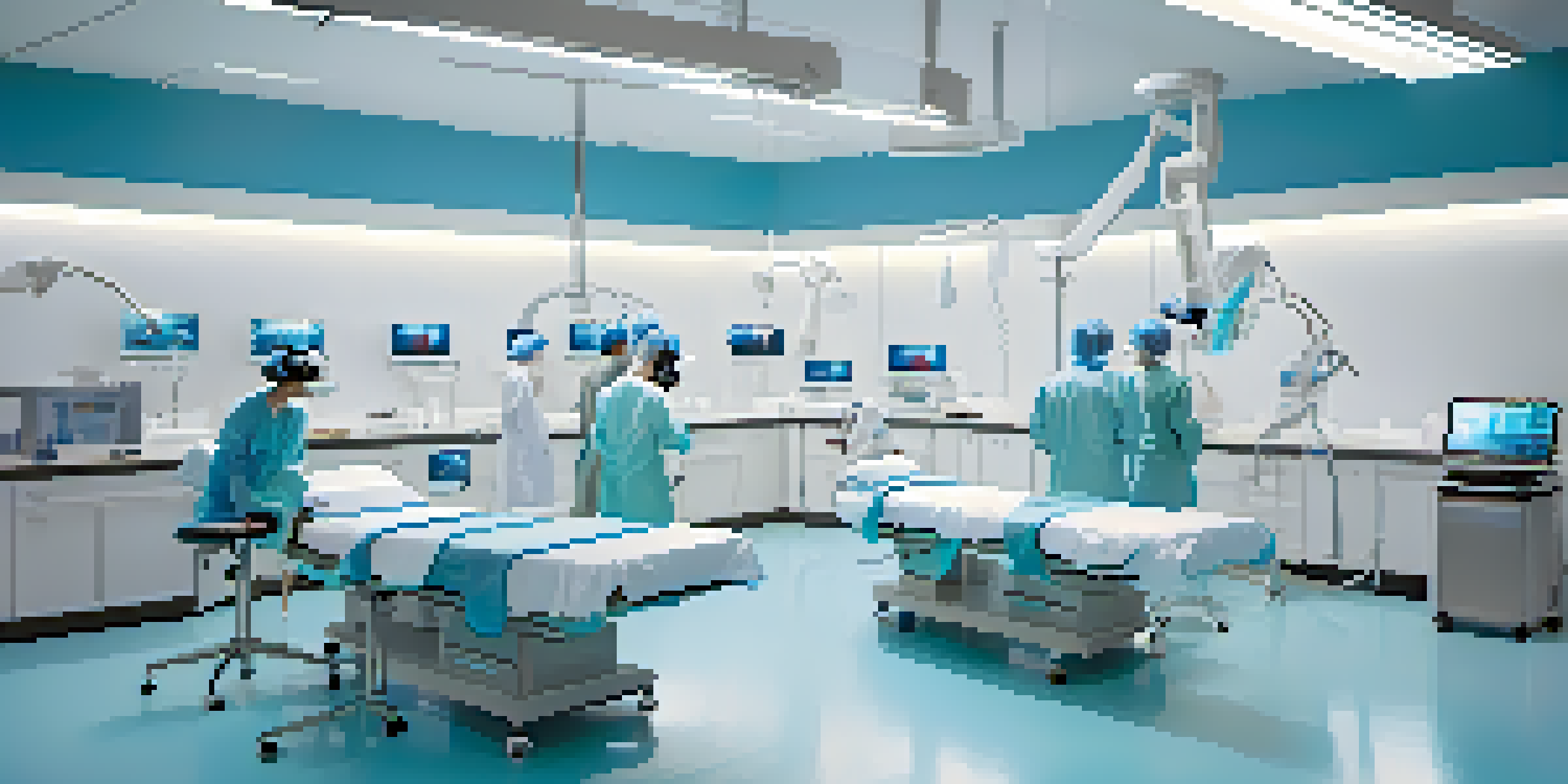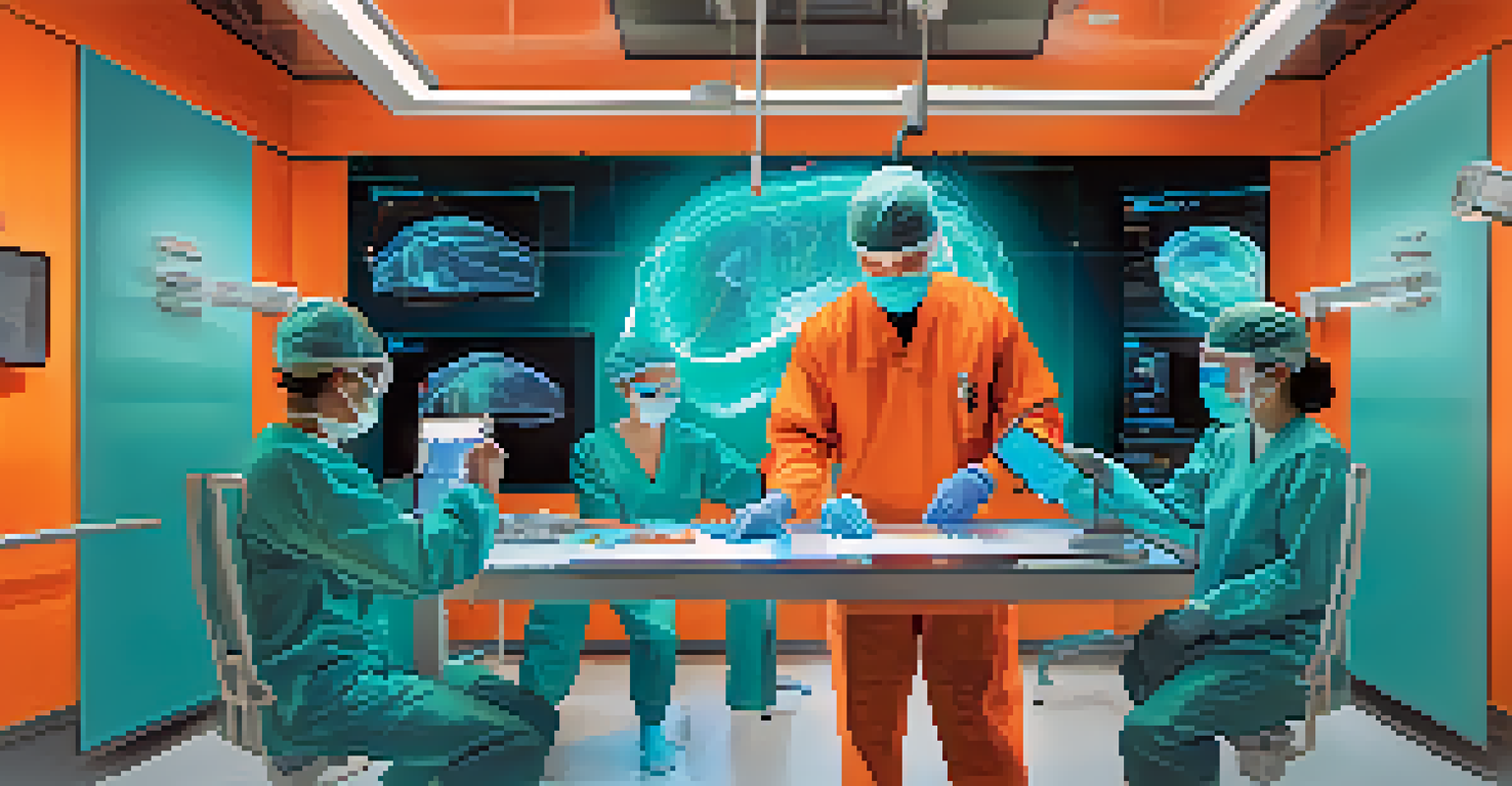Using VR to Train Surgeons: A New Era in Medical Education

The Rise of Virtual Reality in Medical Training
Over the past few years, virtual reality (VR) has emerged as an innovative tool in medical training, particularly for surgeons. It offers a safe and controlled environment where medical professionals can practice complex procedures without the risk of harming patients. As healthcare demands grow, the integration of VR into surgical education presents a unique solution to enhance learning outcomes.
Virtual reality is not just a tool; it’s a new way of thinking about training and education in medicine.
In essence, VR simulates real-life surgical scenarios, allowing surgeons to refine their skills through repetitive practice. This technology provides instant feedback, enabling trainees to learn from their mistakes and improve their techniques. Moreover, it caters to various learning styles, making it an inclusive option for diverse groups of medical students.
As medical institutions recognize the potential of VR, many are incorporating it into their curricula. This shift not only modernizes how surgeons are trained but also prepares them for the fast-paced and ever-evolving field of medicine.
Benefits of VR Training for Surgeons
One of the most significant advantages of VR training is the ability to practice without real-world consequences. Surgeons can navigate complex procedures repeatedly, gaining confidence and mastery over their skills. This practice is crucial, as surgical precision can mean the difference between life and death.

Additionally, VR training can reduce the time it takes for surgeons to become proficient. Traditional training often involves lengthy apprenticeships, while VR allows for more concentrated and focused practice sessions. This efficiency not only benefits the surgeons but also enhances patient care by ensuring that practitioners are well-prepared.
VR Enhances Surgical Training
Virtual reality provides a safe and controlled environment for surgeons to practice complex procedures, improving skill development and confidence.
Moreover, VR offers the possibility of personalized training experiences. Trainees can focus on specific areas where they may need improvement, creating a tailored learning environment that addresses individual strengths and weaknesses.
Real-World Applications of VR in Surgery
Several medical institutions have begun implementing VR training modules for various surgical procedures. For instance, orthopedic and laparoscopic surgeons use VR simulations to practice techniques before performing on actual patients. These applications not only build skills but also foster a deeper understanding of surgical anatomy and techniques.
The future of surgical training lies in immersive experiences that enhance learning and skill development.
In addition to technical skills, VR training helps improve decision-making and critical thinking under pressure. Surgeons face numerous challenges during operations, and practicing in a virtual environment prepares them to react swiftly and effectively. This preparation is invaluable, especially in high-stakes situations.
Furthermore, VR is being utilized for collaborative training sessions, where multiple surgeons can interact in a virtual operating room. This collaborative aspect enhances teamwork skills, which are essential in real-life surgical environments where multiple specialists often work together.
Overcoming Challenges in VR Surgical Training
Despite its numerous benefits, the integration of VR into surgical training is not without challenges. One of the primary concerns is the cost associated with developing and maintaining VR training systems. While prices have decreased in recent years, financial investment remains a barrier for some medical institutions.
Another challenge is ensuring that VR training complements traditional methods rather than replacing them entirely. The tactile experience of working with real surgical instruments is irreplaceable, and it's essential for trainees to balance VR practice with hands-on experience. Finding this equilibrium is crucial for effective surgical education.
Personalized Learning Experiences
VR training allows for tailored training experiences that focus on individual strengths and weaknesses, fostering continuous improvement.
Moreover, the rapid pace of technological advancement means that training programs must continuously adapt to keep up with new developments in VR. Institutions need to invest in regular updates and training for instructors to ensure that they can effectively guide students in this innovative learning environment.
The Role of Feedback in VR Training
One of the standout features of VR training is its ability to provide immediate feedback to users. This feedback mechanism is vital for learning, as it helps trainees identify and correct mistakes in real-time. By receiving constructive critiques, surgeons can refine their techniques and improve overall performance.
Moreover, detailed analytics from VR simulations allow instructors to track progress over time. This data-driven approach enables a more personalized training experience, where educators can adjust programs based on individual needs and skill levels. Such insights foster continuous improvement and facilitate effective learning.
Ultimately, this feedback loop enhances the learning experience, making trainees more adept and confident in their surgical abilities. This not only benefits the individual surgeon but also contributes to higher standards of patient care.
Future Trends in VR Surgical Training
As technology continues to evolve, the future of VR in surgical training looks promising. We can expect to see advancements in realism and interactivity, making virtual scenarios even more immersive. Innovations such as haptic feedback devices will allow trainees to feel the sensations of performing surgery, bridging the gap between virtual and real experiences.
Additionally, VR training might become more accessible as technology becomes more affordable and user-friendly. This accessibility will enable a broader range of medical professionals to benefit from VR, democratizing surgical education and training across various regions.
Future of Medical Education
The collaboration between tech companies and medical institutions will drive advancements in VR, making surgical training more accessible and effective.
Finally, collaboration between tech companies and medical institutions will likely spur further development of specialized VR training modules. By working together, they can create tailored solutions that address specific surgical needs, enhancing the overall quality of medical education.
Conclusion: Embracing VR in Medical Education
The integration of virtual reality into surgical training represents a significant leap forward in medical education. By offering a safe, engaging, and effective way to practice complex procedures, VR is changing the landscape for future surgeons. This technology not only enhances skill development but also prepares medical professionals for the challenges they will face in real-world situations.
As we embrace these advancements, it's crucial to ensure that VR complements traditional training methods, creating a well-rounded educational experience. By doing so, we can cultivate a new generation of surgeons who are not only skilled but also confident and prepared for the demands of their profession.

In conclusion, the future of surgical training is bright, with virtual reality leading the charge. As this technology continues to evolve, so too will the standards of medical education and patient care.